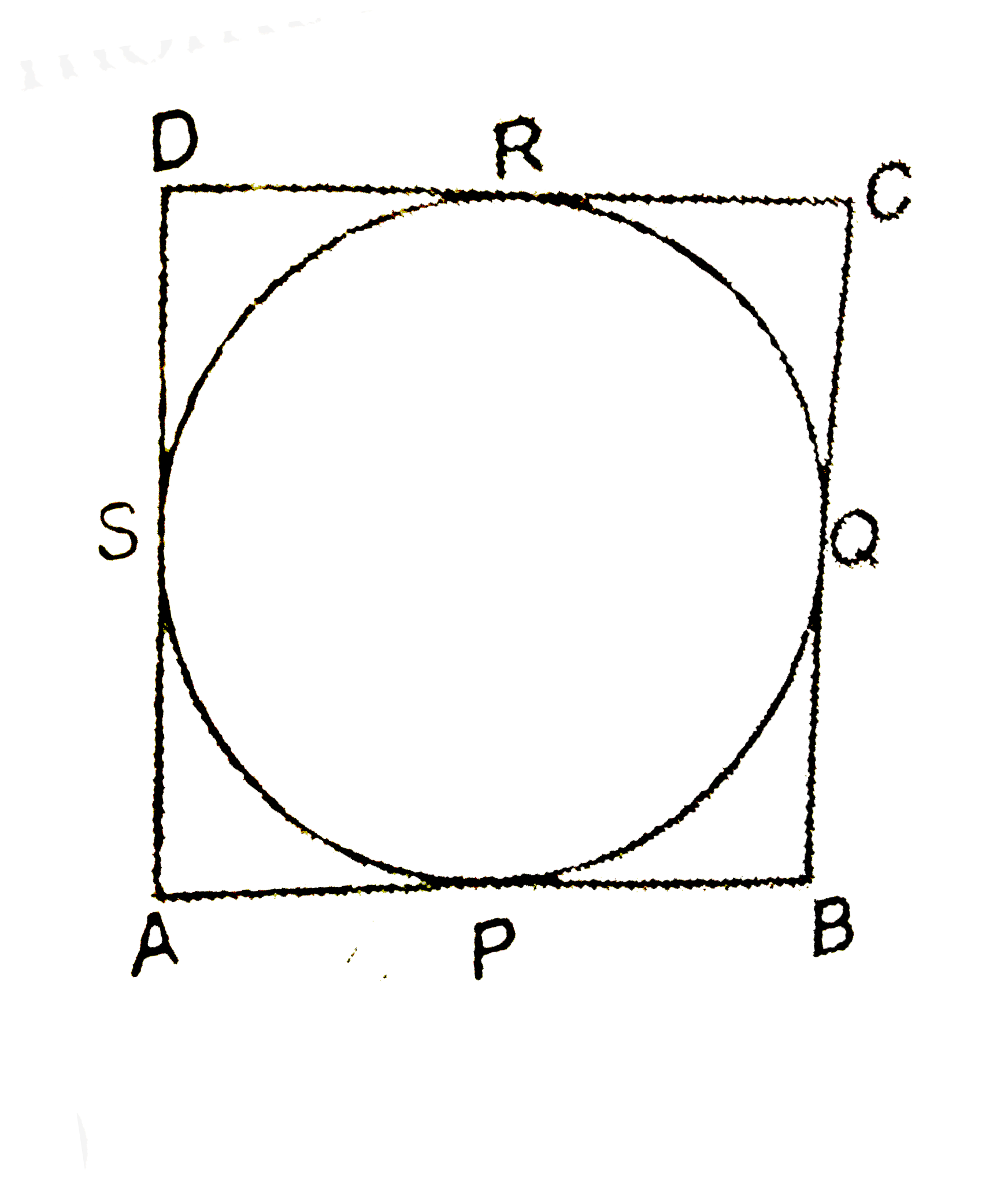If a parallelogram circumscribes a circle then prove that it must be a rhombus.

Given a parallelogram, say ABCD, Let this parallelogram touch the circle at the point P, Q, R and S.
As AP and AS are tangents to the circle drawn from an external point A.
AP=AS …(1)
Similarly, BP=BQ …(2)
CR=CQ ...(3)
DR=DS ...(4)
Circles
Adding (1), (2), (3) and (4), we get
⇒ AP+BP+CR+DR=AS+BQ+CQ+DS
⇒ (AP+BP)+(CR+DR)=(AS+DS)+(BQ+CQ)
⇒ AB+CD=AD+BC
⇒ AB+AB=AD+AD
(CD=AB, DB=AD, opposite sides of a parallelogram)
⇒ 2AB=2AD
⇒ AB=AD
Hence, ABCD is a rhombus. (∵ adjacent sides of a parallelogram are equal) Hence Proved.
Topper's Solved these Questions
- CIRCLESBook:NAGEEN PRAKASHANChapter:CIRCLESExercise:Problems From NCERT/exemplar
Explore 11 Videos
- CIRCLESBook:NAGEEN PRAKASHANChapter:CIRCLESExercise:Exercise
Explore 25 Videos
- ARITHMETIC PROGRESSIONBook:NAGEEN PRAKASHANChapter:ARITHMETIC PROGRESSIONExercise:Revision Exercise Long Answer Question
Explore 5 Videos
- CO-ORDINATE GEOMETRYBook:NAGEEN PRAKASHANChapter:CO-ORDINATE GEOMETRYExercise:Revision Exercise Short Answer Questions
Explore 9 Videos
Similar Questions
Knowledge Check
Assertion(A) If two tangents are drawn to a circle from an external point then they subtend equal angles at the centre.
Reason (R ) A parallelogram circumscribing a circle is a rhombusABoth Assertion (A) and Reason (R ) are true and Reason (R ) is a correct explanation of Asseration (A).BBoth Assertion (A) and Reason (R ) are true but Reason (R ) is not a correct explanation of Asseration (A).CAssertion(A) is true and Reason (R ) is false.DAssertion(A) is false and Reason (R ) is true.If a regular hexagon circumscribes a circle of radius r , then its perimeter is :
A4√3rB6√3rC6rD12√3r
If all the side of a parallelogram touch a circle, show that the parallelogram is a rhombus. OR Prove that a parallelogram circumscribing a circle is a rhombus.
View Solutionif diagonals of a parallelogram bisect each other,prove that its a rhombus
View SolutionIf diagonal of a parallelogram bisects one of the angles of the parallelogram, it also bisects the second angle. Also, prove that it is a rhombus.
View SolutionGiven many parallelograms, prove that a circle can be inscribed only in a rhombus.
View SolutionProve that opposite sides of a quadrilateral circumscribing a circle subtend supplementary angles at the centre of the circle.
View SolutionProve that opposite sides of a quadrilateral circumscribing a circle subtend supplementary angles at the centre of the circle.
View Solution
